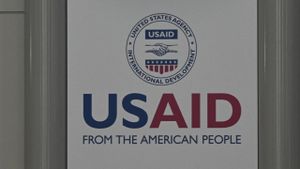North Safari Sapporo, located along National Route 230 in Sapporo, Hokkaido, is facing significant scrutiny after it was revealed the zoo opened without necessary permits and installed illegal signs along the highway. This unauthorized construction has led the operational firm, Success Tourism, to publically acknowledge their missteps and agree to the removal of the unlawful marketing signs.
The signs, which have been present since at least 2006, are approximately 1.5 meters tall and 3 meters wide, indicating the way to the animal park. According to the Hokkaido Development Bureau, placing commercial signs along national roads is strictly prohibited under existing road laws. Despite this, the signs were left unattended for years, even after repeated requests for their removal.
Kazuo Hoshino, representative of Success Tourism, commented on the situation, stating, "We sincerely apologize and will comply with the request to remove the signs.” This response follows his earlier assertion indicating, “Sign installation for directions was recognized temporarily, we thought it was allowed.” Hoshino mentioned issues arising from visitors losing their way and inadvertently entering private properties when trying to locate the zoo.
The Hokkaido Development Bureau stipulated they had informed the zoo’s management about the illegality of the signs since their inspection started back in 2006, with eight separate advisories made across the years leading to the recent discussions on February 4, 2024. Despite their compliance with directions, Hoshino admits they continued placing the signs without any official permissions.
The challenges for North Safari Sapporo extend beyond signage. The management is also facing the alarming prospect of closure due to unpermitted structure construction. The Sapporo city officials are seriously considering issuing demolition orders under the urban planning law. The zoo has been operating since 2005, housing around 150 animal species and drawing both locals and tourists to enjoy their close encounters with wildlife.
“The signs are necessary for business and to guide our visitors,” Hoshino responded when pressed about the zoo's state. Indeed, many visitors share their concerns about the potential closure. One patron noted, “I can’t believe we might lose such a great place to see animals. It’s so sad!”
With the animal park under threat and community members rallying to support its cause, there remains uncertainty about the immediate future. The development bureau's authority has reiterated their point: district public land should not serve for corporate advertisement. Consequently, they will monitor compliance closely.
The controversy highlights the broader issues of animal park regulations and enforcement. Many park operators struggle to navigate bureaucratic red tape and legal requirements, risking their operations. Success Tourism’s predicament serves as both a cautionary tale and pivotal moment for regulatory reflection. The need for clear communication between operators and government entities is undeniably pressing.
“What we hoped was merely to help our guests find their way, but now we realize the consequences of our actions can lead to severe repercussions for everyone involved,” concluded Hoshino. His sincere reflection resonates amid the uncertainty swirling around North Safari Sapporo's future.
Moving forward, the company plans to comply with all directives from the Hokkaido Development Bureau. Hoshino stressed their commitment to rectify the situation posthaste, with the signs set to be dismantled, though specific dates remain undetermined.
Though some urge for the park's operation to persist, the mixed responses from visitors show strong community care and concern facilitating discussion about its direction. It seems increasingly urgent for the relevant authorities to streamline signage regulations for animal parks and possibly enable conditions favorable for fair operations.
The saga of North Safari Sapporo, marked by illegal sign installations and looming closure, continues to garner public interest and raise important questions about compliance, community engagement, and the future of animal parks across Japan.



